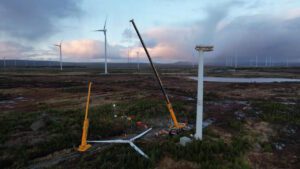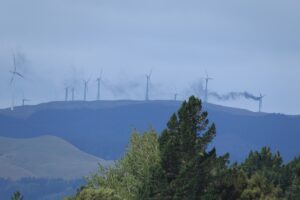Campbell Newman just cannot seem to get his mind around what to do about solar PV.
First Newman brought the state’s net feed-in tariff to a screeching halt, but did it in such a way that he sparked a mini solar boom that even the industry is struggling to keep up with. Then, his government toyed with the idea of “gross” feed-in tariffs, only to pull back quickly, and last week got slapped down in quick time when the Queensland Competitive Authority raised the prospect of imposing a significant fixed charge on households with rooftop solar.
The manner in which the public responded to the idea of a fixed charge would have sent ripples of alarm through the government and its state-owned utilities, which are struggling to come to terms with the changing dynamics of the industry, as well as how to get a return from their massive over-investment in infrastructure, how to retain value in the portfolio of (state-owned) generation assets (some of which have already had to be closed), and how to keep on side with the consumer.
The response to this latter effort has proved to be unexpectedly vocal. Previous changes to tariff structures would be met with glazed eyes and a shrug of the shoulders – now the pricing of electricity is a hot issue with voters. And the installation of rooftop solar has turned these consumers into “pro-sumers”, with a keen sense of what they consider to be a fair deal in the electricity market.
To get an idea, check out the response when the Courier Mail first reported last week on the QCA’s proposal to impose the standing charges. Even the commercial TV current affairs shows jumped on the story. Within 24 hours, the idea was dumped by the Queensland government.
As one installer noted, careful to keep his identity quiet because they still have to do business with the local utilities, there are now 200,000 homes in Queensland with solar PV and another 50,000 actively considering it. That represents about 500,000 adults, or about 20 per cent of the voting public. “I think the penny must have dropped. You just can’t piss this many people off and get away with it.”
It is not the first time that the QCA has tried to hobble solar with punitive tariff regimes. Earlier this year, it considered imposing a gross feed-in tariff on rooftop solar. This would have meant that householders would not only get paid just 6c-8c for excess energy exported to the grid, they would be required to sell all their energy at that price to the retailers, and then buy it back at the prevailing retail price, around 25c/kWh.
That didn’t get very far into the public arena, but it drew a savage response from the industry, and a stark warning from energy retailers such as EnergyAustralia, which said it could cause a pushback against the industry.
“Under the proposed changes, households would be required to ‘sell’ energy to the grid at the cost of energy, and then ‘purchase’ energy for their own use, at up to three times the price,” it wrote in its submission. It said this would be confusing and “may create the perception that electricity retailers are benefiting at the consumer’s expense.”
But it seems that the public still thinks that the retailers are benefiting at their expense. The QCA argued that a fixed charge was needed because solar PV was not addressing peak demand, and was imposing costs on the network, which were being passed on to other non-solar consumers.
The industry hotly disputes this. It was fascinating to see what happened last week when Queensland experienced temperatures up around the 40°C mark. Peak demand fell some 500MW below the peaks in similar situations just two years ago. That bears a striking resemblance to the amount of solar PV that has been installed in the state since then (it totals around 700MW), although a variety of factors would have played a role.
The off-grid option appears to becoming increasingly appealing to people, as problematic as it might be for those living in the city. “If this comes into place I will be getting the panels disconnected and arrange for someone to connect them to batteries and run the house off them and I’m sure many others will too,” wrote one aggrieved customer.
It is certainly appealing to commercial-scale users, where tariffs in Queensland, and in parts of NSW, have been changed to include large standing charges and a modest per kW charge, to reduce the attraction of solar PV.
Utilities have previously scoffed at the idea of customers moving off-grid, and of the economics of storage. But then they once scoffed at the idea that solar PV would ever reach “socket parity”, which it plainly has in some areas in Australia.
Dane Muldoon, the commercial director for Solar Guys, one of the long-standing installers in Queensland, is rolling out a new battery storage product that offers varying levels of autonomy. He says the economics don’t quite make it, but the emotion does. “People get very angry when you explain the tariff structure, and why they are selling electricity back into the grid and then buying it back as a multiple,” he says. “They are expressing a lot of interest in the product.” That interest jumped sharply last week when the standing charges were mooted.







